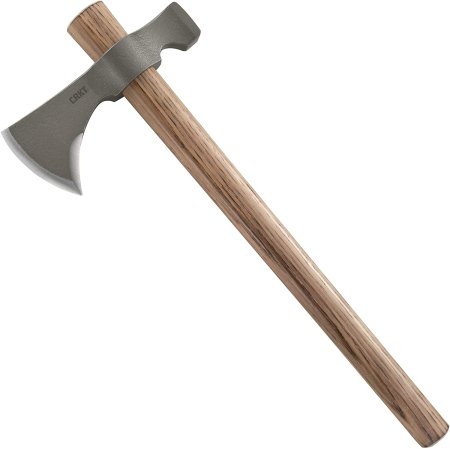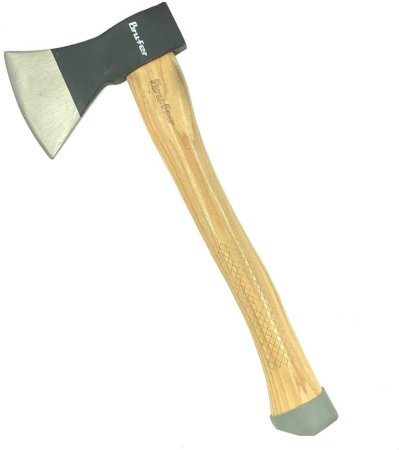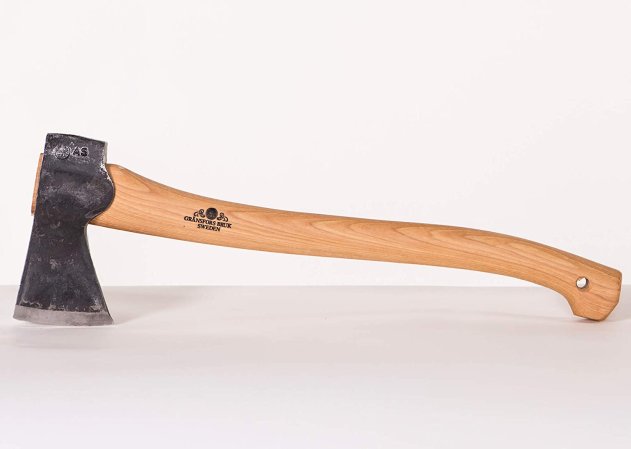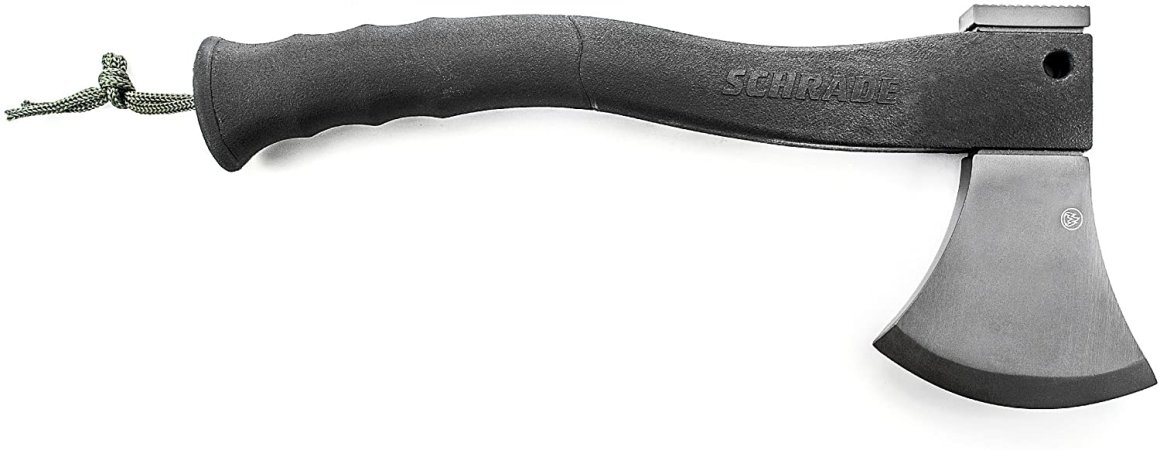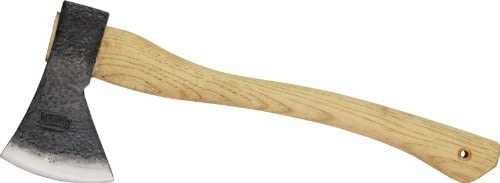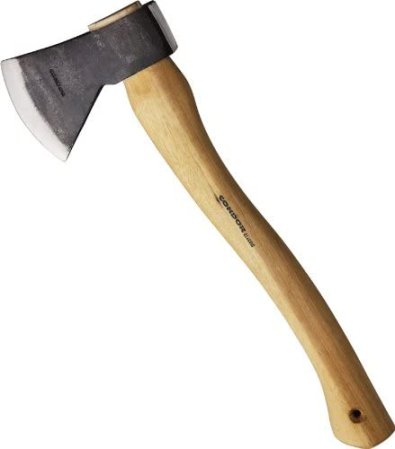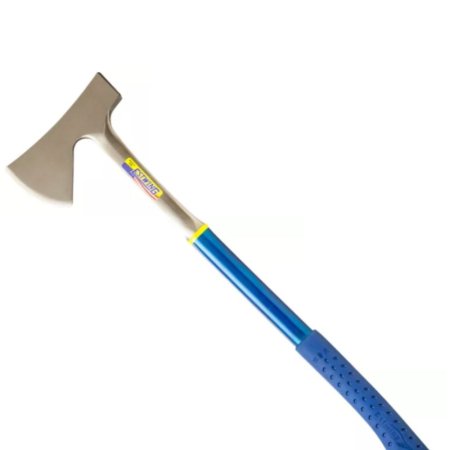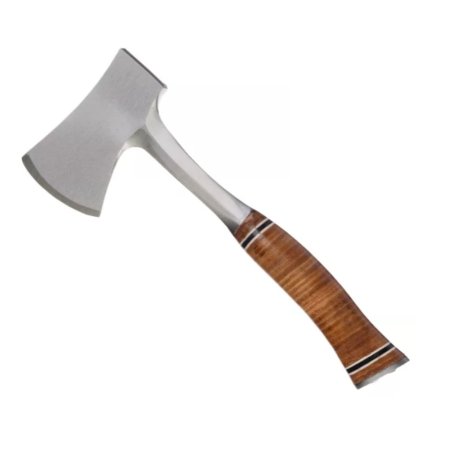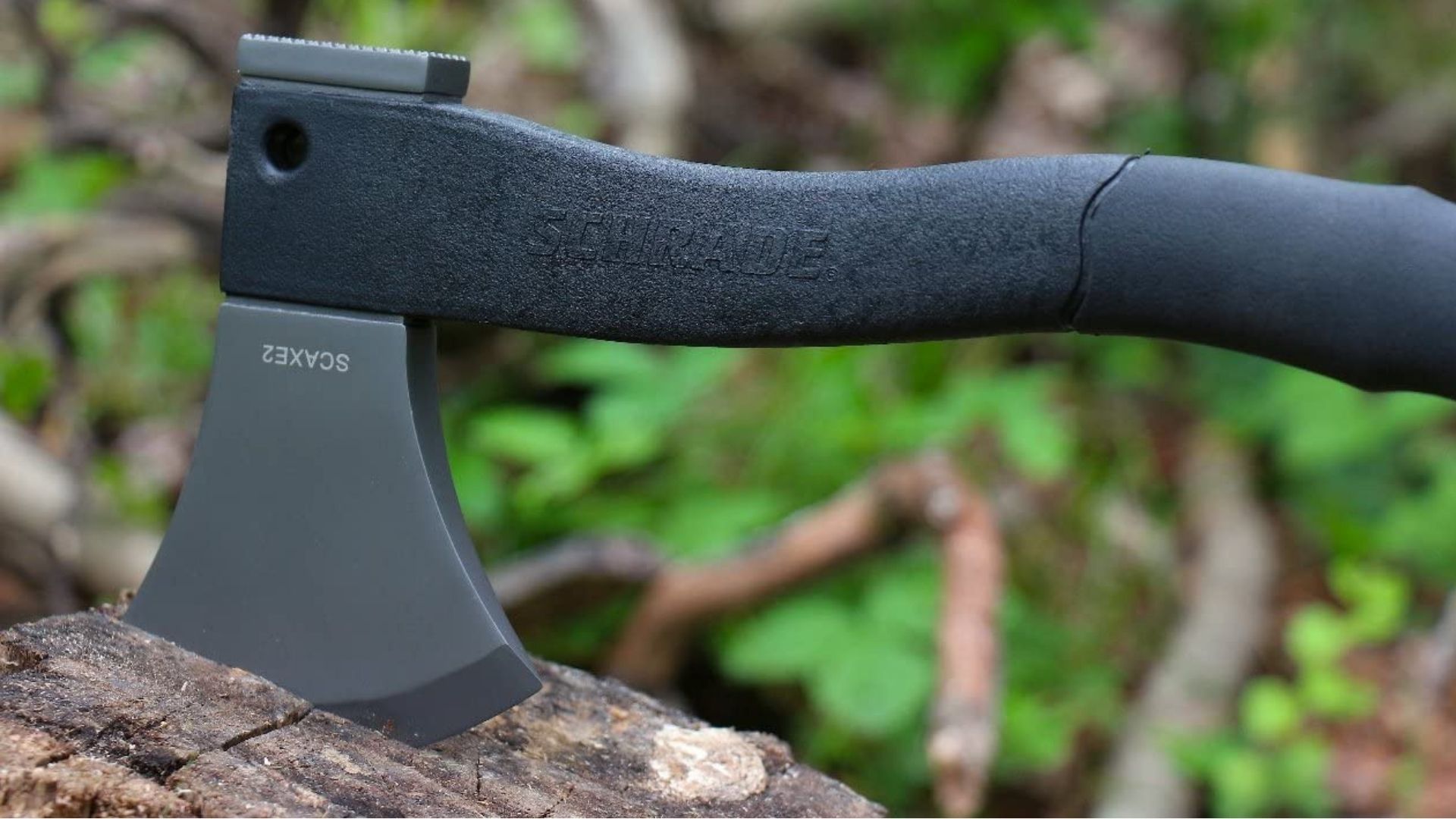

We may earn revenue from the products available on this page and participate in affiliate programs.
It’s no secret that an axe is one handy tool, a must-have when you’re chopping or splitting logs, creating an outdoor shelter, and even felling trees. If you’re camping, hiking, or heading out into the woods for any reason at all, a bushcraft axe is just what you need.
Available in a wide array of different shapes and sizes, bushcraft axes can be slim and small enough to work like a hatchet or large enough to tackle serious jobs like cutting branches, splitting piles of wood, and more. No matter which kind you need, there are plenty of options to choose from. Suitable for creating firewood to clearing paths and trails, a bushcraft axe gives you a ton of versatility in one simple tool. It can do so much more than a small survival knife, too.
Wondering which bushcraft axes are worth investing in? You can find the perfect outdoor companion right here with our list of the best bushcraft axes available.
CRKT Woods Forged Carbon Steel Axe
Brufer Hatchet Axe
Gransfors Bruks Small Forest Axe
Schrade Stainless Steel Small Axe
Marbles Camp Axe
Snow u0026 Nealley Hudson Bay Axe
Condor Tool u0026 Knife Greenland Pattern Axe
Estwing Long Handle Camper’s Axe
Hults Bruk Kisa Felling Axe
Estwing Sportsman’s Axe
Why should you trust us
I have nearly a year of experience reviewing products for Brookline Media’s websites, including The Drive and Car Bibles. My past reviews include best ATV bags, best solar chargers for backpacking, and best waterproof tents. I’ve also written historical articles for War History Online, how-to articles for WonderHowTo, and the nonfiction book Fidget! for Adams Media.
Types of bushcraft axes
Bushcraft axes, like plenty of other axes, come in all different shapes, sizes, lengths, and weights. They can feature various kinds of cutting edges and head shapes, and each specific type of bushcraft axe can be used for specific needs or uses. Meant for wilderness skills and uses, most bushcraft axes are hardy and durable.
Typically, any bushcraft axe is meant to help you handle a variety of outdoor tasks. Part survival tool and part wood splitting and chopping tool, a bushcraft axe can cover skills like felling trees, chopping logs, cutting apart game, and even hammering tent stakes into hard ground. Survival tasks like chopping through ice and creating kindling are also possible with one of these axes.
To find just the right bushcraft axe for your needs, you can learn more about the different types of axes and their uses right here.
Bushcraft Hatchet
A bushcraft hatchet is a smaller, more compact axe that’s designed to be held and used with just one hand. It’s a perfectly portable option, with a handle that typically measures between 9 and 14 inches in length and an axe head that weighs between 1 and 1.5 pounds. With a bushcraft hatchet, you can tackle tasks like splitting small logs for firewood, carving various types of wood, and cutting limbs or clearing a path.
You shouldn’t rely on a bushcraft hatchet for any chopping or cutting jobs that require you to slice through wood that’s 2 inches or more in thickness. It’s a better choice for smaller, one-handed jobs that don’t require a ton of force or effort.
Small bushcraft axe
A small bushcraft axe is a step up from a hatchet. This kind of axe can be used one-handed or with both hands, and it’s both longer and heavier. Small axes tend to have handles between 18 and 20 inches in length and a head that weighs between 1.5 and 2 pounds. It’s able to handle larger pieces of wood and tougher jobs; you can use one of these bushcraft axes for carving, chopping, and splitting.
A small bushcraft axe is one of the most versatile options available, as it’s still easy enough to carry anywhere and highly versatile. You can cut items up to 4 inches thick with one of these one- or two-handed cutting tools. It’s even possible to take down medium-sized trees.
Bushcraft felling axe
A bushcraft felling axe is the right choice if you want an axe that can handle some seriously big tasks. It’s the biggest kind you’ll find for bushcraft use — these axes are significantly longer and heavier, and they’re designed to take down big or even massive trees. Made just for felling, these axes tend to have handles between 24 and 30 inches long with a head that weighs between 2 and 4 pounds in total.
A felling axe isn’t the most travel-ready option, but it’s the best choice if you need to take down trees. These are great for anyone who’s working on their own outdoor property or headed into thickly wooded areas.
What to consider when buying a bushcraft axe
When you’re considering and comparing different bushcraft axes, it’s important to think about two features that’ll directly affect how your axe cuts: the handle and the blade. These two critical components determine how heavy your axe is, how easy it is to wield, and how powerful it is for various outdoor jobs.
To determine which axe has just the right handle, you’ll want to pick one that measures between 18 and 28 inches long. These are the most comfortable handle lengths for bushcraft, and they offer the best balance of comfort and ease of use. You’ll also want to think about the material the handle is made from. Wood is the best choice for bushcrafting; American hickory and ash are two popular, durable choices because they can easily absorb the shock of your swings and impacts.
When it comes to the axe blade, you’ll want to opt for one that’s medium in thickness and crafted out of forged steel. Bushcraft axe blades come in all kinds of different steel varieties and formulations; one of the most common is Scandinavian. And don’t forget to consider the weight. A blade weighing 3 pounds or less is best, as heavier blades can be too difficult to carry with you.
Do you need a bushcraft axe?
If you’re someone who works outdoors, camps, or simply enjoys bushcrafting as a hobby, then you’ll want to make sure you have a quality and reliable bushcraft axe. These axes are powerful and convenient, helping you to tackle all kinds of different jobs outdoors. Whether you’re cutting up lumber, working with wood, creating kindling for a fire, or even felling huge trees, a bushcraft axe is your best ally.
The right bushcraft axe can make a world of difference. Having one that’s efficient and comfortable to wield means you’ll be able to work quickly and easily. But the perks of choosing and using a bushcraft axe don’t end there. You’ll also enjoy:
- A sturdy cutting tool that stays sharp and effective throughout many uses and countless challenging jobs.
- Increased strength when you’re cutting items thick and thin, depending on the axe you choose.
- More power as you cut wood of all varieties, whether you’re working with one hand or two.
- Better flexibility, as many axes and their handles offer a good balance of flex upon impact to prevent aches and pain.
- Great versatility to cut all kinds of different items from logs to trees to branches and limbs.
Pricing ranges for bushcraft axes
- $45 or Less: If you’re looking for a value-driven axe that won’t break the bank, there are plenty of one-handed hatchets and small to medium axes available within this price range. Quality can vary, but they’ll get most jobs done.
- $50 to $150: For $50 to $150, you’ll find a wealth of great bushcraft axes. From small hatchets to large felling axes, there’s an option for every budget and every quality level within this price range.
- $150 and Up: Within this range, you’ll find the most premium axes. This includes handmade axes with specialized uses and carefully forged blades. Most are made with top-tier and more expensive materials, too.
How we chose our top picks
To create our list of the best bushcraft axes, we scoured the selection of available options online at retailers like Amazon and Bass Pro Shop to find the highest-rated and most-reviewed products. We looked at the potential uses, sharpness of each blade, and other key factors like the weight and customers’ real-world experiences putting these axes to use as well.
